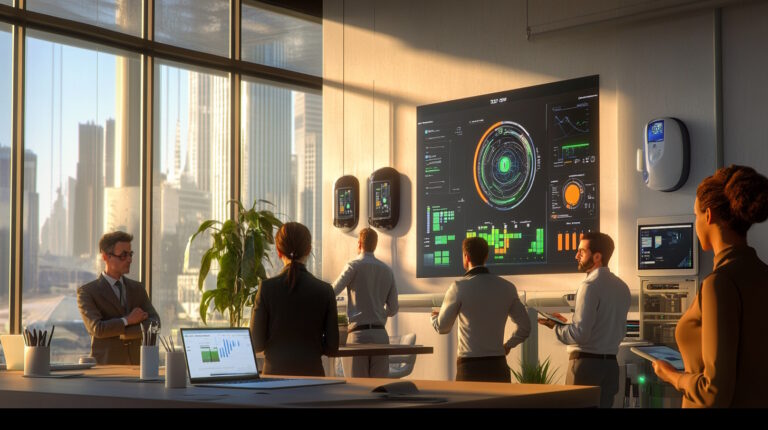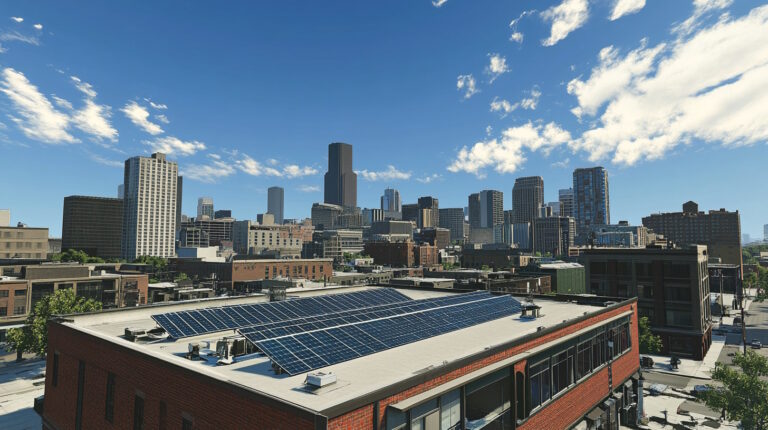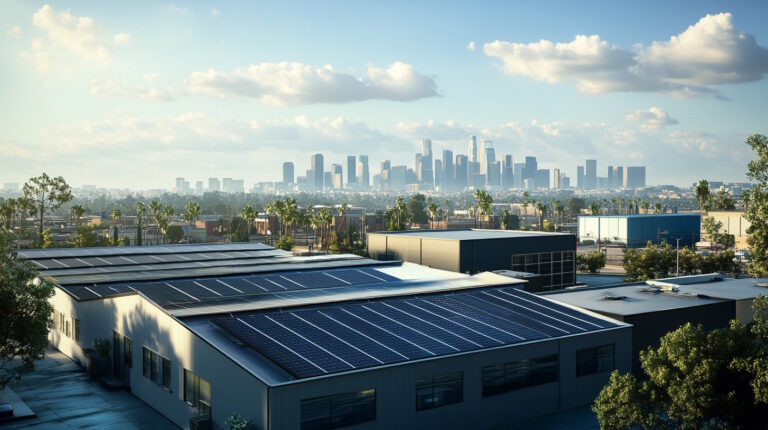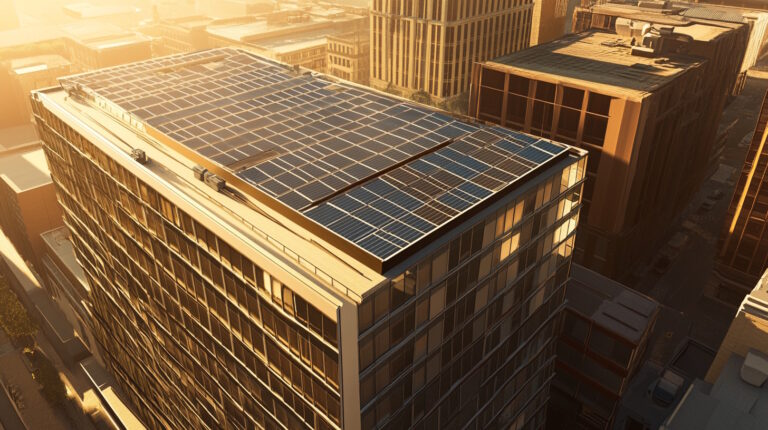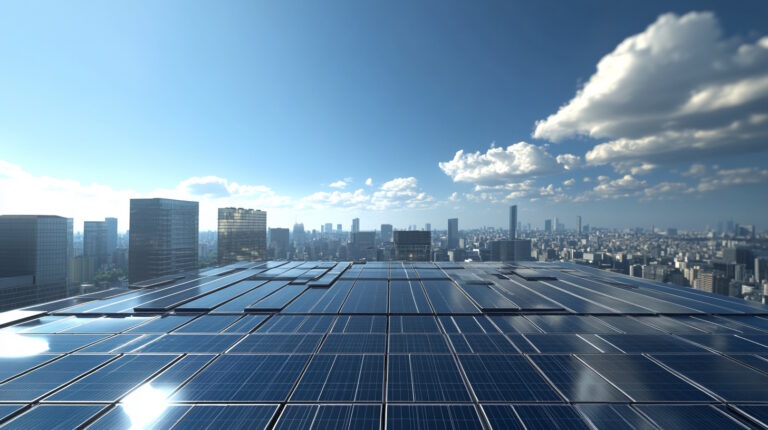Article Insights
– 💡 Discover how to accurately determine the number of solar panels needed to power a commercial building and save on energy costs.
– 💡 Learn about the key factors influencing solar energy requirements, including location, roof space, and energy efficiency upgrades.
– 💡 Explore different types of solar panels best suited for businesses and their advantages in maximizing energy output.
– 💡 Understand the benefits of commercial solar panel installation, such as cost savings, sustainability, and energy independence.
Harnessing the Sun: How Many Solar Panels Are Needed to Power a Commercial Building?
In today’s eco-conscious world, sustainability isn’t just a buzzword—it’s a business imperative.
With commercial solar panel installation at the forefront of sustainable practices, businesses worth their salt are turning their rooftops into energy-generating assets.
But here’s the million-dollar question: how many solar panels do you actually need to power one of these commercial buildings?
Whether you’re setting up row after row of sleek panels or just dipping your toes into solar waters, understanding these energy needs is crucial.
Let’s shine a light on the maze of factors influencing your solar energy journey and empower you with the insights to make informed decisions.
Embarking on the Solar Adventure
Mixing environmental responsibility with economic pragmatism, harnessing solar power means reducing operating costs while championing environmental preservation.
But before you can bask in the warm glow of solar savings, it’s essential to understand your energy needs.
Understanding Energy Consumption in Commercial Buildings
Electricity usage in commercial buildings is as varied as the businesses themselves.
A bustling office building with hundreds of computers and lighting systems will have different energy needs compared to a warehouse focusing on storing goods.
Figuring out your annual energy consumption in kilowatt-hours (kWh) becomes the foundational step in calculating your solar panel requirements.
This, however, isn’t an effort done alone; energy professionals can help provide detailed insights to streamline this process.
Making your commercial space more energy-efficient can also ease your solar journey.
Simple upgrades like LED lighting, energy-efficient HVAC systems, or better insulation might lower overall consumption, consequently reducing the number of solar panels you’ll need.
Factors Influencing Solar Panel Requirements
Once you’ve tackled your energy consumption, it’s time to assess the nuances that impact how effectively those solar panels perform.
Location Matters: Your geographical location is one of the critical determinants of solar panel efficiency. The number of sunlight hours, local climate, and even weather patterns play into how much energy panels can convert.
Roof Space: It’s a bit of real estate math—how much of your roof can accommodate solar panel arrays? The more, the merrier. More space means more panels, and thus more energy potentially generated.
System Output: This involves both solar panels and inverter efficiencies. The better the technology, the more power you’ll generate per panel, maximizing every inch of your solar setup.
Energy Needs: Remember, it’s not just about average consumption. Understanding peak power needs can further influence how many panels you’ll ultimately require.
Calculating Solar Panel Needs
Now let’s do some calculations—fun, we promise! Determining your energy consumption annually by skimming through previous energy bills can give you a tangible figure to work with.
Next, it’s your solar panel’s time to shine. Multiply the average peak sunlight hours your geographic location receives by the wattage capacity of your chosen solar panel type.
Once you have these numbers, simply divide your annual consumption by the solar panel output to reveal the magic number of panels your business needs.
Remember, it’s always wise to leave a margin of error or allowance for future energy needs or fluctuations.
Types of Solar Panels Best Suited for Businesses
The classic debate between monocrystalline, polycrystalline, and thin-film solar panels isn’t just reserved for energy nerds—it’s a crucial decision zone for any business.
Monocrystalline Panels: Known for their efficiency and longer life-span, these neat black squares are perfect for businesses where space is at a premium.
Polycrystalline Panels: Slightly less efficient than their monocrystalline cousins, they’re easier on your wallet, making them ideal for budgets that demand precision.
Thin-Film Solar Panels: These are the jack-of-all-trades when it comes to versatile installations but often trail in efficiency compared to the other two.
The Sunny Side of Solar Panel Installation
If someone handed you an investment that promises long-term financial savings, a reduced carbon footprint, and energy independence, would you turn it down?
Probably not. That’s exactly what commercial solar panel installation brings to the table.
With the potential for tax incentives and government rebates sweetening the deal, it’s a financially savvy decision with a heartwarming environmental impact.
Keeping Your Solar System Shining Bright
Having a stellar solar setup is just the beginning. Regular maintenance and monitoring ensure that your solar system isn’t just a set-and-forget solution.
Occasional inspections, cleaning, and component upgrades keep your system performing optimally, translating to more green savings and less grid dependency.
Solar Future: A Bright Prospect
The leap toward powering commercial buildings with solar energy isn’t just about energy—it’s a decision brimming with future-proof benefits.
Engaging with solar consultants for tailored solutions and exploring financing options ranging from leases to power purchase agreements can provide tailored pathways for your solar journey.
A little navigation through local zoning laws and regulations ensures a smooth transition, leaving you with peace of mind and a very visible commitment to sustainability.
With every gleam of sunlight on a solar panel, businesses step closer to a sustainable future, ensuring that they won’t just survive, but thrive.
Ready to light up your commercial business with solar efficiency? Let’s make the sun work for you. Learn more about boosting your business with solar energy power solutions.


